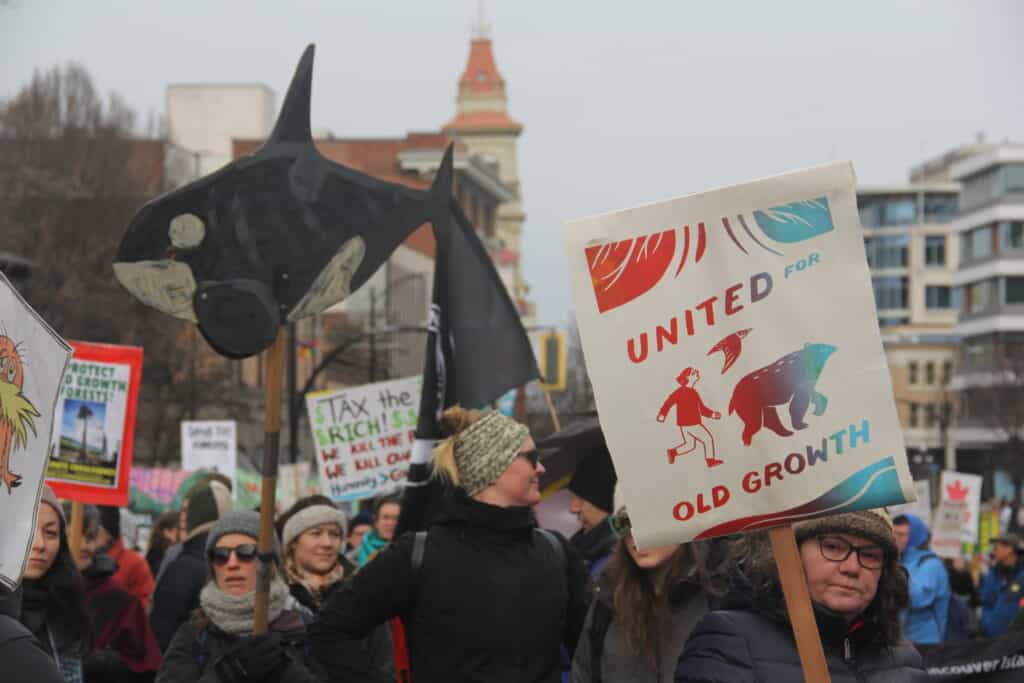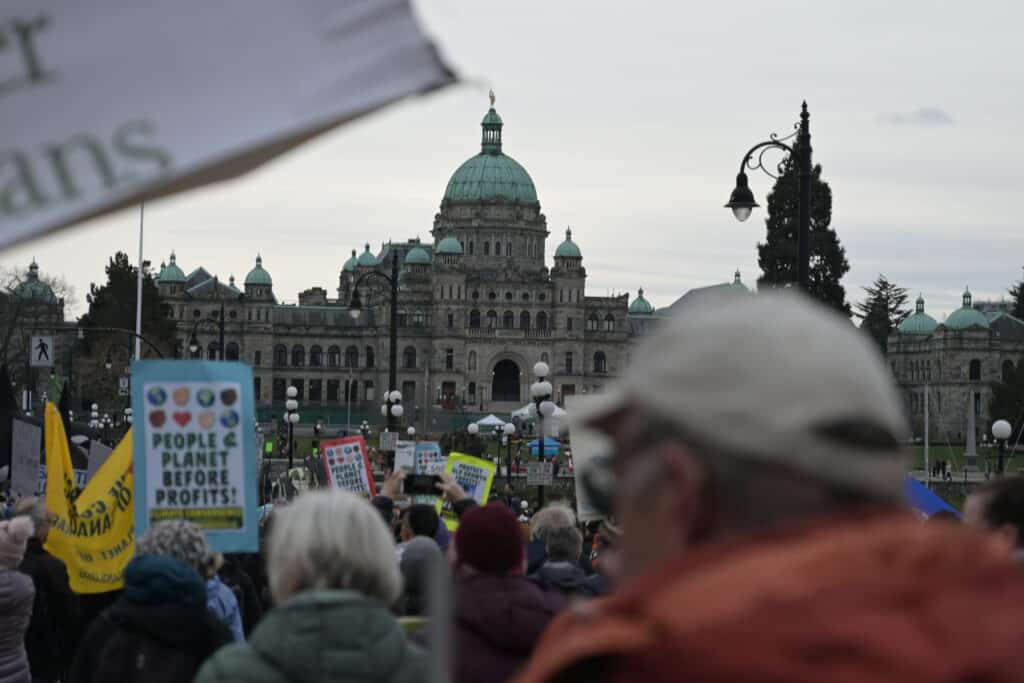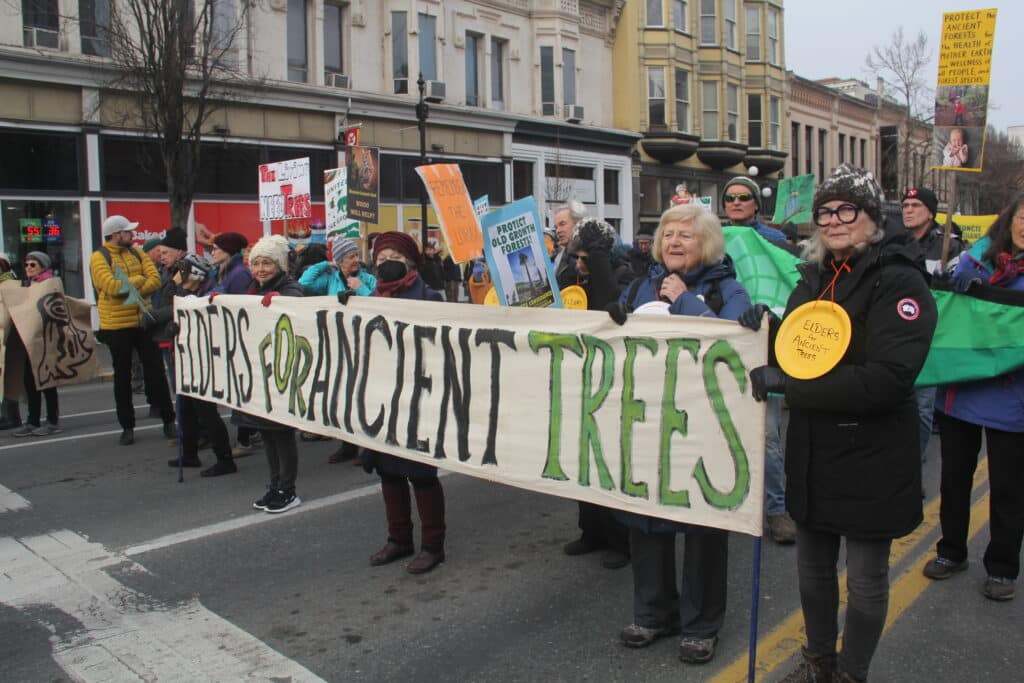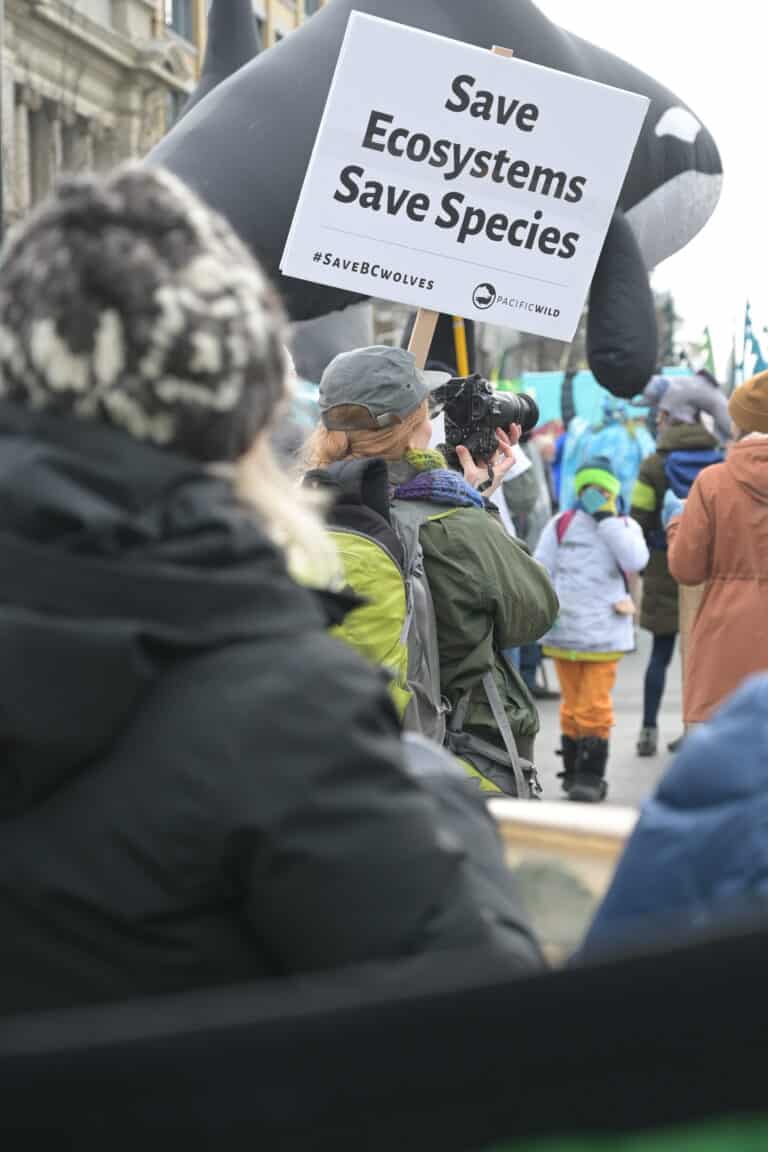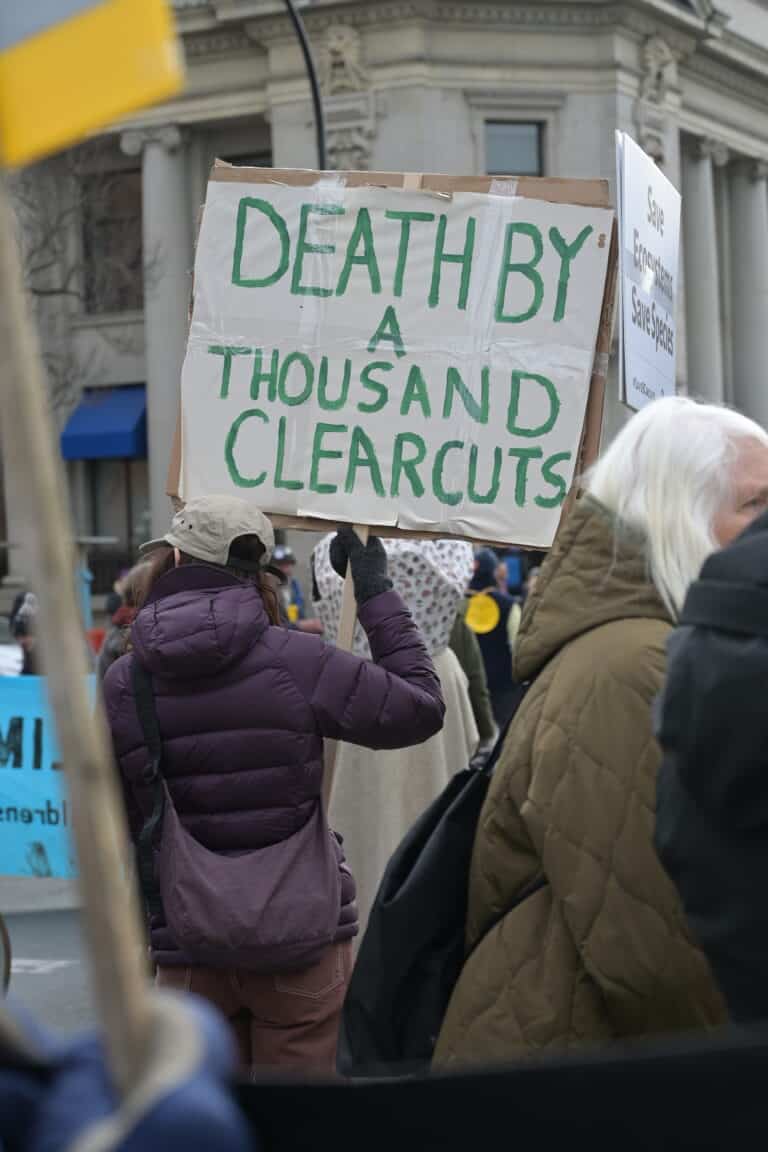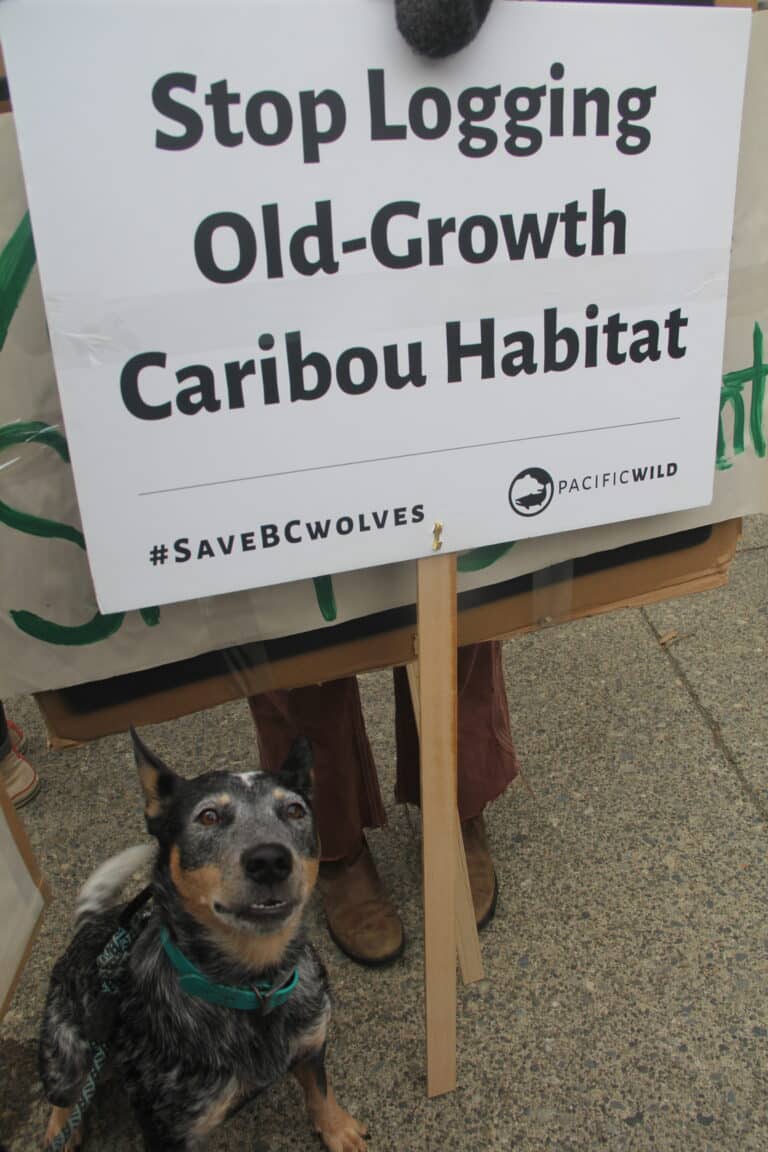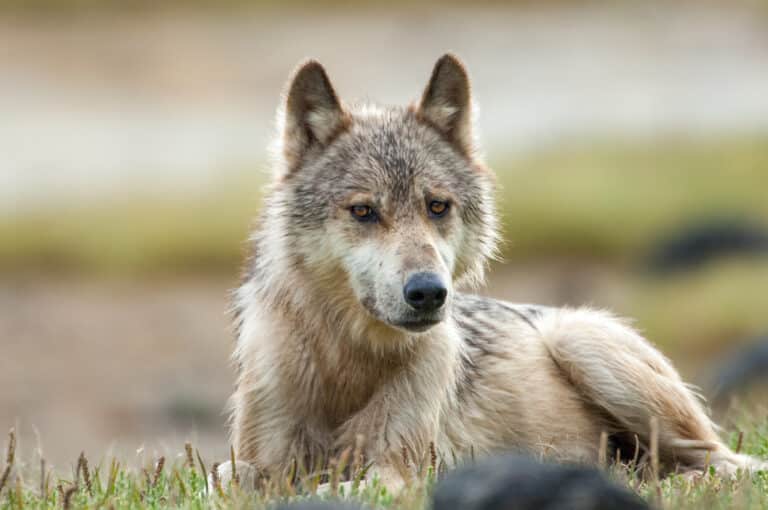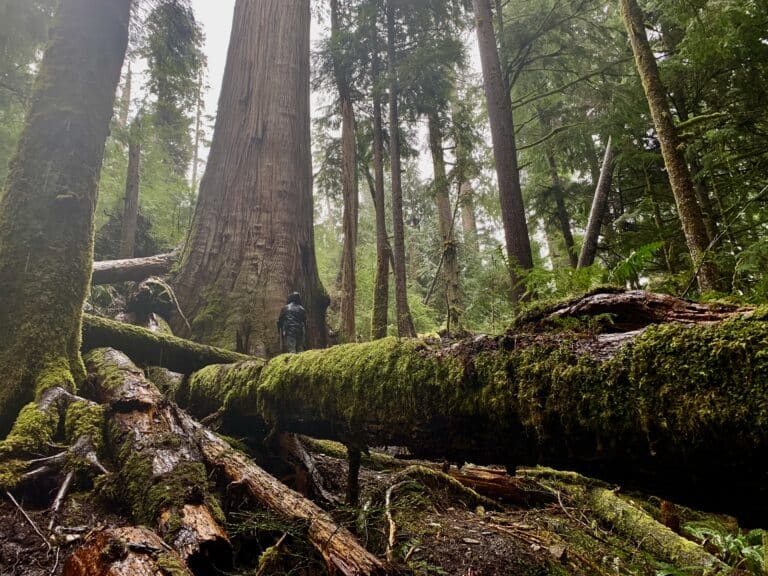Despite the cold, thousands of people showed their love for ancient forests on Saturday as crowds led by Indigenous forest defenders like Janelle Lapointe and Chiyokten, marched to demand fast and concrete action to protect old growth forests. There was even a surprise appearance by Neil Young, who took a train all the way from LA to attend.
Premier Eby made big promises in December about protecting 30% of lands and waters in B.C. to safeguard biodiversity, adding to existing promises the NDP government made in 2020 to implement the 14 recommendations of the Old-Growth Strategic Review. Instead, the Province continues to allow the majority of the most at-risk ancient forest to be logged, even after the deferrals, and is shifting the blame for species loss elsewhere.
Endangered old-growth species like bears, owls, newts, flowers and mushrooms were painted on big banners placed around the stage. The artistic renderings of species appeared to be looking down at the crowds reminding us that old-growth protection is about more than just saving big trees. The interconnectedness of all life forms, including ourselves, who depend on these ancient systems, was a running theme in the words spoken from the podium.
Kwakwaka’wakw Hereditary Chief ´Walas ´Namugwis, David Mungo Knox, spoke powerfully about what this means for Kwakiutl people: “This ancient old growth is so important for us to be who we are, as the people of this land.[…]There’s a reason why we call it the Mother Tree of Life, because other trees, medicine, berries live off those roots, [and] that [tree] holds a canopy over where the salmon spawn. Everything is so connected. And we’re so connected with the world, with the air, the land and the sky, and also the supernatural world. […] That’s who we are as people of this land.”
“We [are] one strand in a web of relationships” noted David Suzuki, “and Indigenous people continue to tell us when you’re in that kind of a relationship with the rest of creation, you’ve got responsibilities.” The world- renowned environmentalist and broadcaster reminded those present how critical our responsibilities are to protect what is left: “We are the repository of some of the last great wildernesses, particularly the boreal forest, but also the coastal temperate rainforest, which is a very, very precious and endangered ecosystem on the planet.” Suzuki lamented how little we know about the planet, while we destroy so much of it, and how the arrogance of assuming that colonial systems can take care of air, water and forest, is what has driven us to this critical point of climate crisis and species loss. “The only people with a track record of living sustainably in place for thousands of years are the Indigenous people. [..]We’ve got to give that land back and let them show us how we take care of that land.”
Afro-Indigenous climate justice and Indigenous rights organizer, Janelle Lapointe of the Stellat’en First Nation drove the purpose of the rally home, demanding immediate change. “Indigenous people are the ones that bear the brunt of the climate crisis, and on the front lines of the old growth forest resistance and have been the strongest force. […] And so I’m here today to hold David Eby, our Premier’s feet to the fire, his commitment to act on accelerating old growth [protection], which means putting down the chainsaws today and no longer logging in these precious ecosystems.”
The messages from the rally were clear: the B.C. government has been mismanaging forests for too long and we should be guided by the experience of Indigenous people, who have lived in the Pacific Northwest for over 14 thousand years, to inform how we relate to these lands and species. Chief Knox closed off the speeches with a tough question: “How do we implement stewardship in all levels of the ministries and industry?”
The shift has to happen within us all. Western models of conservation and management need to be more holistic and ecosystem based: the government must stop only protecting islands of unconnected groves of big trees without considering watersheds and habitat, and stop trading one species to save another.”
In a presentation by the Valhalla Wilderness Society (VWS) on Interior temperate rainforests held after the rally, Deep Snow Mountain Caribou were described as the canary in the coal mine. A map of a mountainside showing radio collar data from caribou clearly showed that the animals were all clustered together in the tiny pockets of the patchwork landscape where old growth forest remained. For almost a decade, Pacific Wild has been working hard to draw attention to the misplaced scapegoating of wolves to save caribou when the old-growth habitat they rely on for their survival continues to be open to logging.
The wolf killing program was launched in 2015 with the stated intention of protecting endangered caribou from predation to help populations recover, until the habitat regrows. Meanwhile, permits for destructive resource extraction continue to be granted, and herds continue to disappear. In a recent Caribou Recovery Program Update government officials stated that it would take 40 years until the habitat had recovered enough for Caribou to survive. Old growth forests will not replenish after 40 years of tree plantations, especially not if during that time the existing habitat continues to be logged. Do we want to spend the next 40 years killing wolves instead of saving ecosystems?
Amber Peters, from VWS, also noted that research is only just starting to show the role that wolves show in population health such as controlling the spread of disease from sick animals. Wolves can detect things that hunters “just can’t.”
It was a spirited day of protest, yet, optimism was still in the air. Renowned forest ecologists Karen Price and Rachel Holt highlighted the fact that the language around forest protection is changing, and the key now is to capitalize on the momentum and push for change in policy.
As Neil Young said “these trees have lasted so long, they deserve Canada’s respect.”
